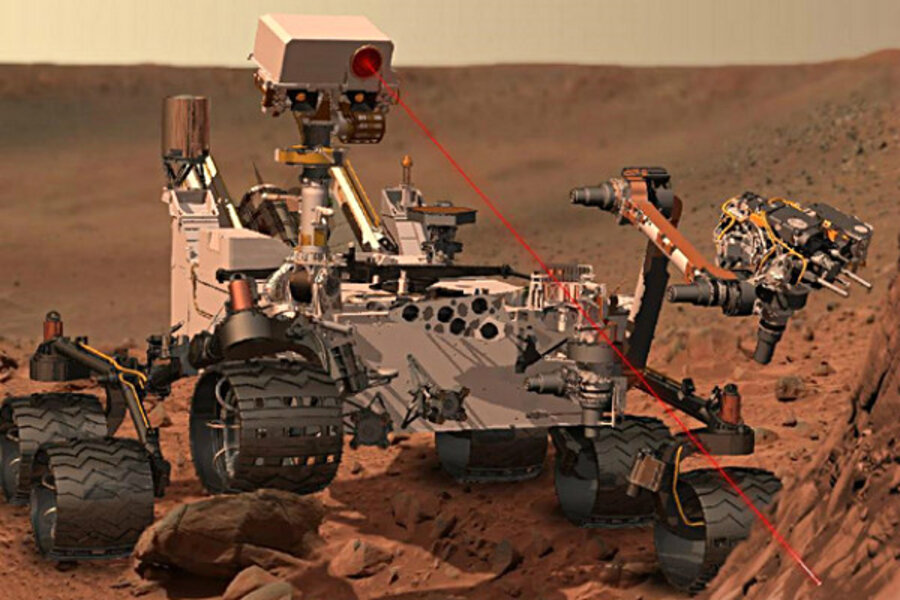Everything you need to know about the Mars rover Curiosity
Since launching in November 2011, NASA’s Mars Science Laboratory (MSL) has been on a 560 million-kilometer (350 million-mile) journey to the Red Planet, with landing scheduled for late Sunday August 5 or early Monday August 6, depending on where you live on Earth. The Curiosity rover has been tucked away cozily into a spacecraft for safekeeping during flight, but when it reaches Mars surface it will encounter tough and frigid conditions, all in the name of science.
This is NASA’s fourth rover mission to Mars, and its goal is to determine the planet’s past — and present — potential for habitability. Want to know more? Here are some facts about Curiosity and the mission:
When will it land on Mars?
For us Earthlings, the Curiosity rover will land on Mars at 05:31 UTC on Aug. 6 (10:31 p.m. PDT on Aug. 5 and 1:31 a.m. EDT Aug. 6) plus or minus a minute. This is Earth-received time, which includes one-way light time (13.8 minutes) for radio signal to reach Earth from Mars. The landing will be at about 3 p.m. local time at the Mars landing site.
How long does it take for the rover to get to Mars surface after it reaches the outer atmosphere?
About 7 minutes. Dubbed the “seven minutes of terror” by NASA, MSL will employ a parachute, landing rockets, a hovering sky crane, and other complicated mechanisms to help lower the rover to the surface of Mars.
How big is the parachute?
The diameter of the parachute is 15 meters (51 feet). It is a supersonic parachute, the largest ever deployed on another world. The parachute can withstand 65,000 lbs of pressure, which is critical, as in the Martian atmosphere, once the parachute deploys, it will still be forced to cope with 9Gs of pressure. It is orange and white (the school colors of Caltech, home of the Jet Propulsion Laboratory)
How big are the spacecraft and the rover?
Cruise vehicle dimensions (cruise stage and aeroshell with rover and descent stage inside): Diameter: 4.5 meters (14 feet, 9 inches); height: 3 meters (9 feet, 8 inches)
Curiosity Rover dimensions: Length: 3 meters (9 feet, 10 inches) — (not counting arm); width: 2.8 meters (9 feet, 1 inch).
Height at top of mast: 2.1 meters (7 feet)
Arm length: 2.1 meters (7 feet). The arm is capable of collecting powdered samples from rocks, scooping soil, preparing and delivering samples for analytic instruments, and brushing surfaces on the planet.
Wheel diameter: 0.5 meter (20 inches)
Mass: 3,893 kilograms (8,463 pounds) total at launch, consisting of 899-kilogram (1,982-pound) rover; 2,401-kilogram (5,293-pound) entry, descent and landing system (aeroshell plus fueled descent stage); and 539-kilogram (1,188-pound) fueled cruise stage.
How does the rover get its power for roving?
Multi-mission radioisotope thermoelectric generator and lithium-ion batteries
What are the science instruments on board Curiosity?
10 instruments weighing a total of 75 kilograms (165 pounds)
Alpha Particle X-ray Spectrometer, Chemistry and Camera, Chemistry and Mineralogy, Dynamic Albedo of Neutrons, Mars Descent Imager, Mars Hand Lens Imager, Mast Camera, Radiation Assessment Detector, Rover Environmental Monitoring Station, and Sample Analysis at Mars
How many cameras are on Curiosity?
17 (some of which are part of the 10 science instruments) to do many of the tasks scientists do in a lab. Instead of sending samples back to Earth for humans to analyze, the Curiosity rover will thus be able to do laboratory tests right from the Martian surface.
When did Curiosity launch?
Nov. 26, 2011, 10:02 a.m. EST, from Launch Complex 41, Cape Canaveral Air Force Station, Fla.
Launch Vehicle: Atlas V 541 provided by United Launch Alliance
How far is Mars away from Earth?
Earth–Mars distance at launch: 204 million kilometers (127 million miles)
Earth–Mars distance on landing day: 248 million kilometers (154 million miles)
Total distance of travel, from Earth to Mars: About 567 kilometers (352 million miles)
How fast can Curiosity rove?
On average, the rover is expected to travel across the surface of Mars at about 30 meters (98 feet) per hour, based on power levels, slippage, steepness of the terrain, visibility, and other variables.
Where is Curiosity’s landing site?
Landing site: 4.6 degrees south latitude, 137.4 degrees east longitude, near base of Mount Sharp inside Gale Crater, a layered mountain that rises 4.8 kilometers (3 miles). The mountain was named after planetary geologist Bob Sharp.
What will the weather be like at Gale Crater?
Expected near-surface atmospheric temperatures at landing site during primary mission: minus 90 C to zero C (minus 130 F to 32 F ). Bascially, cold and windy with wind gusts of up to 144 km/h (90 mph) —as strong as some hurricane winds on Earth. Mars is home to dust storms and quickly moving whirlwinds known as dust devils.
How many possible landing sites did scientists considered before deciding on Gale Crater?
60. Gale Crater was chosen because it is thought to contain elements that are important to the search for the ingredients of life.
How long is the primary mission?
One Martian year. Because a day on Mars is longer than one on Earth—39 minutes and 35.244 seconds longer, to be exact—a Martian year is equal to 98 weeks, or 687 days, on Earth.
How much does this mission cost?
$2.5 billion, including $1.8 billlion for spacecraft development and science investigations and addition amounts for launch and operations.
Nancy Atkinson is Universe Today's Senior Editor. She also is the host of the NASA Lunar Science Institute podcast and works with the Astronomy Cast and 365 Days of Astronomy podcasts. Nancy is also a NASA/JPL Solar System Ambassador.
Connect with Nancy on Facebook | Twitter | Google + | Website






